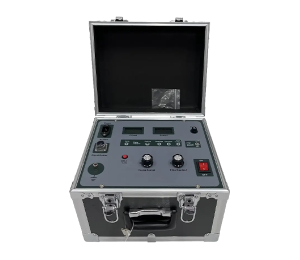 English
English



-
 Afrikaans
Afrikaans -
 Albanian
Albanian -
 Amharic
Amharic -
 Arabic
Arabic -
 Armenian
Armenian -
 Azerbaijani
Azerbaijani -
 Basque
Basque -
 Belarusian
Belarusian -
 Bengali
Bengali -
 Bosnian
Bosnian -
 Bulgarian
Bulgarian -
 Catalan
Catalan -
 Cebuano
Cebuano -
 China
China -
 China (Taiwan)
China (Taiwan) -
 Corsican
Corsican -
 Croatian
Croatian -
 Czech
Czech -
 Danish
Danish -
 Dutch
Dutch -
 English
English -
 Esperanto
Esperanto -
 Estonian
Estonian -
 Finnish
Finnish -
 French
French -
 Frisian
Frisian -
 Galician
Galician -
 Georgian
Georgian -
 German
German -
 Greek
Greek -
 Gujarati
Gujarati -
 Haitian Creole
Haitian Creole -
 hausa
hausa -
 hawaiian
hawaiian -
 Hebrew
Hebrew -
 Hindi
Hindi -
 Miao
Miao -
 Hungarian
Hungarian -
 Icelandic
Icelandic -
 igbo
igbo -
 Indonesian
Indonesian -
 irish
irish -
 Italian
Italian -
 Japanese
Japanese -
 Javanese
Javanese -
 Kannada
Kannada -
 kazakh
kazakh -
 Khmer
Khmer -
 Rwandese
Rwandese -
 Korean
Korean -
 Kurdish
Kurdish -
 Kyrgyz
Kyrgyz -
 Lao
Lao -
 Latin
Latin -
 Latvian
Latvian -
 Lithuanian
Lithuanian -
 Luxembourgish
Luxembourgish -
 Macedonian
Macedonian -
 Malgashi
Malgashi -
 Malay
Malay -
 Malayalam
Malayalam -
 Maltese
Maltese -
 Maori
Maori -
 Marathi
Marathi -
 Mongolian
Mongolian -
 Myanmar
Myanmar -
 Nepali
Nepali -
 Norwegian
Norwegian -
 Norwegian
Norwegian -
 Occitan
Occitan -
 Pashto
Pashto -
 Persian
Persian -
 Polish
Polish -
 Portuguese
Portuguese -
 Punjabi
Punjabi -
 Romanian
Romanian -
 Russian
Russian -
 Samoan
Samoan -
 Scottish Gaelic
Scottish Gaelic -
 Serbian
Serbian -
 Sesotho
Sesotho -
 Shona
Shona -
 Sindhi
Sindhi -
 Sinhala
Sinhala -
 Slovak
Slovak -
 Slovenian
Slovenian -
 Somali
Somali -
 Spanish
Spanish -
 Sundanese
Sundanese -
 Swahili
Swahili -
 Swedish
Swedish -
 Tagalog
Tagalog -
 Tajik
Tajik -
 Tamil
Tamil -
 Tatar
Tatar -
 Telugu
Telugu -
 Thai
Thai -
 Turkish
Turkish -
 Turkmen
Turkmen -
 Ukrainian
Ukrainian -
 Urdu
Urdu -
 Uighur
Uighur -
 Uzbek
Uzbek -
 Vietnamese
Vietnamese -
 Welsh
Welsh -
 Bantu
Bantu -
 Yiddish
Yiddish -
 Yoruba
Yoruba -
 Zulu
Zulu
dc winding resistance test of transformer
Understanding the DC Winding Resistance Test of Transformers
The DC winding resistance test is a critical procedure in the maintenance and assessment of transformers, essential components in electrical power systems. This test serves a dual purpose it evaluates the integrity of the transformer windings and ensures that the transformer is operating efficiently and without defects.
Importance of the DC Winding Resistance Test
Transformers are subject to various physical and electrical stresses over their operational lifetime. These stresses can lead to problems such as uneven heating, moisture ingress, and insulation degradation, which can compromise the reliability and efficiency of the equipment. The DC winding resistance test is valuable for identifying these issues early.
One of the primary objectives of this test is to determine the resistance of the transformer’s windings, which can help in calculating the temperature rise and assessing the overall health of the transformer. Consistent and low resistance values typically indicate a sound winding structure, whereas high resistance values may signal potential problems such as loose connections or internal faults.
Test Procedure
The DC winding resistance test involves several steps to ensure accuracy and safety
. Firstly, it is crucial to disconnect the transformer from the power system to eliminate any electrical hazards and ensure that the readings are taken in a controlled environment.Once the transformer is isolated, a DC resistance measuring device, commonly known as a micro-ohmmeter, is connected to the terminals of the transformer winding. The device injects a low DC voltage into the winding, measuring the current that flows through it. From these two measurements – voltage and current – the resistance can be calculated using Ohm’s Law (R = V/I).
dc winding resistance test of transformer

Typically, tests are conducted on each phase of the transformer windings, and the results are recorded. The data obtained should be compared to the manufacturer’s specifications and previous test results to identify any significant deviations.
Analysis and Interpretation of Results
The results of the DC winding resistance test provide valuable insights into the condition of the transformer. Generally, the resistance should remain consistent across all phases of a three-phase transformer. Significant discrepancies can indicate issues such as winding failure, poor connections, or short circuits.
Moreover, the temperature of the windings can influence resistance readings. Therefore, it is crucial to perform the test under consistent temperature conditions or to apply correction factors for temperature differences. This practice ensures that the resistance values reflect the true state of the windings rather than being skewed by thermal effects.
Conclusion
The DC winding resistance test is an essential diagnostic tool in transformer maintenance. Regular testing not only helps in monitoring the health of the transformer but also plays a significant role in preventing unexpected failures and extending the lifespan of the equipment. By identifying problems early, operators can take proactive measures to maintain the reliability and efficiency of their transformers, ultimately ensuring the stability of the electrical power system.
In conclusion, the DC winding resistance test is simple yet critical for transformer health assessment. It helps engineers and technicians ensure that transformers operate at peak efficiency and reliability, safeguarding the entire electrical infrastructure in which they serve. Regular testing should be included in routine maintenance schedules to prevent costly downtime and ensure long-term operational success.
-
Ensuring SF₆ Gas Safety: Introducing PUSH’s Integrated SF₆ Analyzer for Dew Point, Purity, and Decomposition MonitoringNewsJul.10,2025
-
Exploring the Main Types of Industrial Endoscopes and Their Applications Across IndustriesNewsJul.04,2025
-
Testing Equipment Industry Sees Major Advancements in 2025: Smart & Precision Technologies Lead the WayNewsJun.06,2025
-
Applications of Direct Current Generators in Renewable Energy SystemsNewsJun.05,2025
-
Hipot Tester Calibration and Accuracy GuidelinesNewsJun.05,2025
-
Digital Circuit Breaker Analyzer Features and BenefitsNewsJun.05,2025



